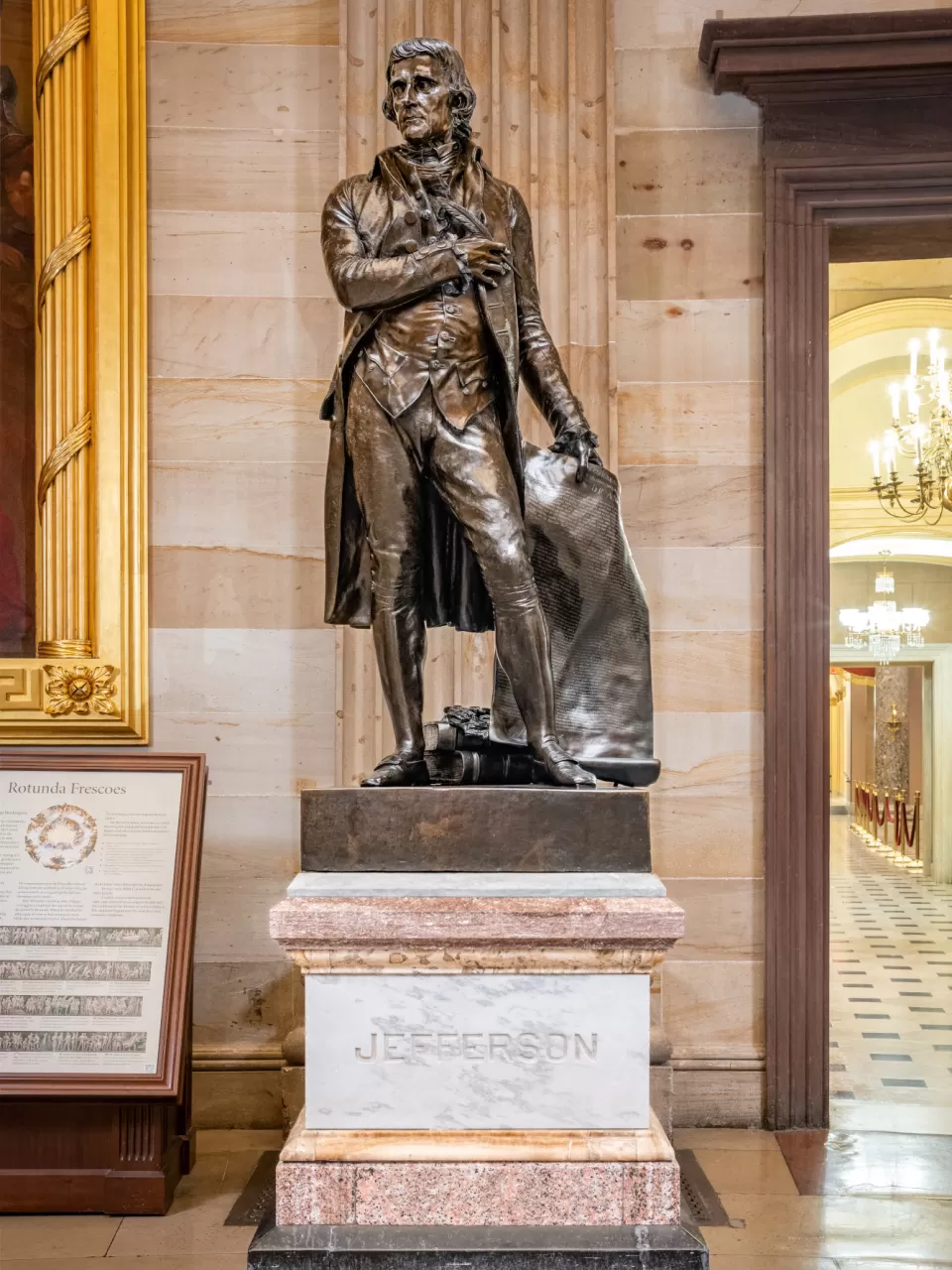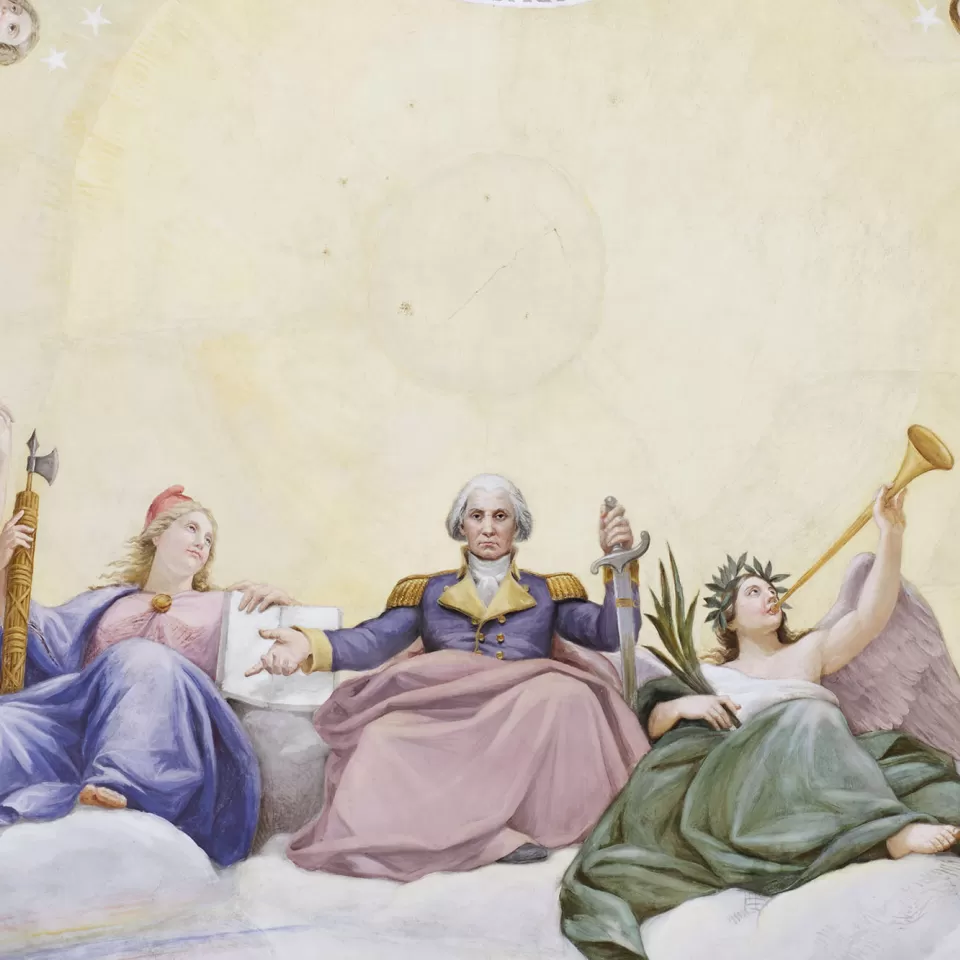Our Stories
Recent Articles
History & Discoveries
A Hallowed Figure in American Art and Culture: the Bald Eagle
The bald eagle is painted, sculpted and carved throughout the Capitol campus. Its white head, wide wingspan and gnarled talons are ubiquitous.
History & Discoveries
Unearthing Capitol Hill's Buried History
Visit Congressional Cemetery and discover the many connections the Architect of the Capitol has to this hallowed ground.
History & Discoveries
The U.S. Capitol Rotunda: Celebrating 200 Years as the Heart of American Democracy
The Rotunda was completed under the direction of Charles Bulfinch by the time of the visit of the Marquis de Lafayette in October 1824.
History & Discoveries
The Liberty Cap: Symbol of American Freedom
The 2024 Olympic mascot is a conical cap, the Phryge, a French symbol of freedom, but it symbolized freedom in the United States before the French adopted it.












Comments
What a great article to celebrate Jefferson's birthday! Thanks, Erin, for the excellent summary of his contributions and depictions in the Capitol.
Wondrous works of art!
Thank you! I love this! It was like a scavenger hunt of my mind recalling the spaces that are occupied with 'Jefferson art' throughout the Capitol. A few that I had not noticed before......wonderful! Now, how about a search for the present day broadway "darling"and oh so in demand......Alexander Hamilton?
Good stuff. I like the pictures.
Add new comment